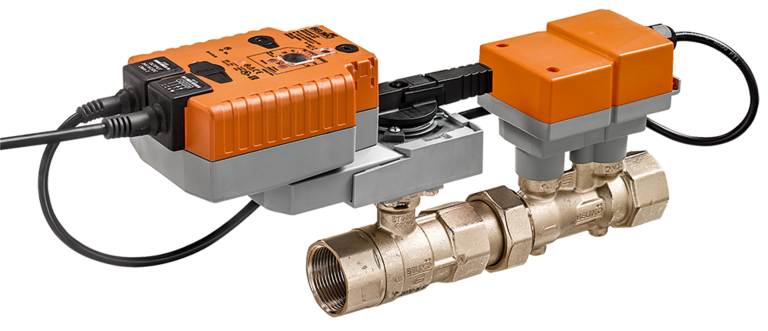In a previous blog (CW standby management), we already discussed the fact that liquid cooling systems with centralized chilled water supply and so-called CW (= chilled water) precision air conditioning units are the most popular choice for cooling larger data centers. This is primarily because of their good scalability and comparably simple hydraulics.
Along with the chilled water heat exchanger and fans, the chilled water control valve is the other principal mechanical component of a CW precision air conditioning unit. In the past, either 3 or 2-way control valves were used, depending on the type of hydraulic system and pump used (variable or constant speed). However, for some time now so-called "pressure independent control valves" or "PICVs" have also been frequently used as 2-way control valves or ball valves.
In order to better understand the method of operation and advantages of the PICV, we would do well to recall some fundamental hydraulic principles:
-
A control valve ensures that a heat exchanger is always supplied with the correct quantity of water for the current operating point or cooling needs (full load or partial load). The appropriate valve position or degree of opening is determined by an external control signal.
-
The valve size (keywords: Kvs value, Valve Authority) must be based on the required quantity of water (full load operation) and the water-side pressure drop at the heat exchanger.
-
The pressure drop at the control valve resulting from the valve calculation is also referred to as "differential pressure". This differential pressure and the pressure drop at the heat exchanger must be correctly harmonized with one another. When the differential pressure is too low (valve too large), the valve has only a small stroke range, with adverse effects on control quality and unstable control behavior (fluctuations) as possible consequences. With a too high differential pressure (valve too small) there is major noise and cavitation possible and superfluous pump energy consumed.
-
In every hydraulic system, pressure through the valves, heat exchanger and pipes vary depending on the type of system, installation location and distance from the pump, as well as on changing load conditions.
-
The definitive factor when determining the size and settings of the pump is to make sure that the last consumer in the system is always supplied with the necessary quantity of water at full load, and that the associated differential pressure can be surmounted.
-
The closer a consumer (e.g. a CW precision air conditioning unit) is situated to the pump, the greater the flow rate and, without so-called "hydraulic balancing", the differential pressure through the control valve of this consumer will also rise. Hydraulic balancing makes sure that each consumer in the system always receives the required quantity of water, and that the water does not take the path of least resistance.



